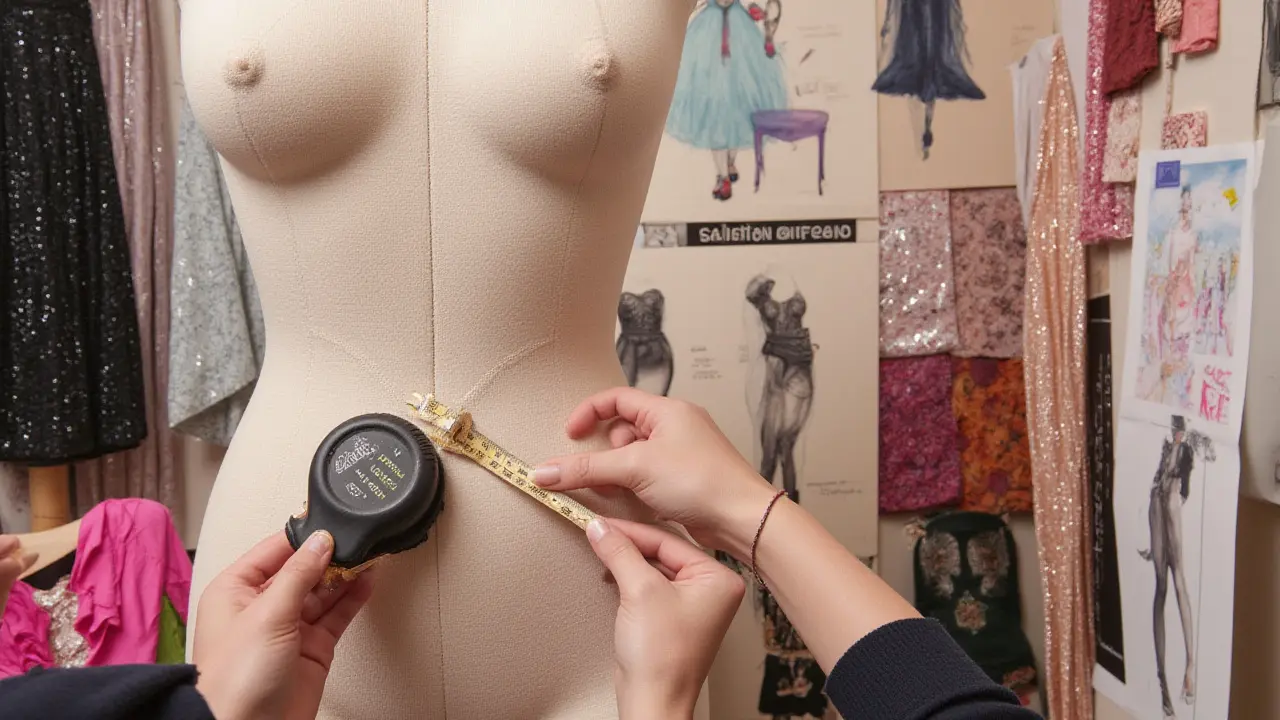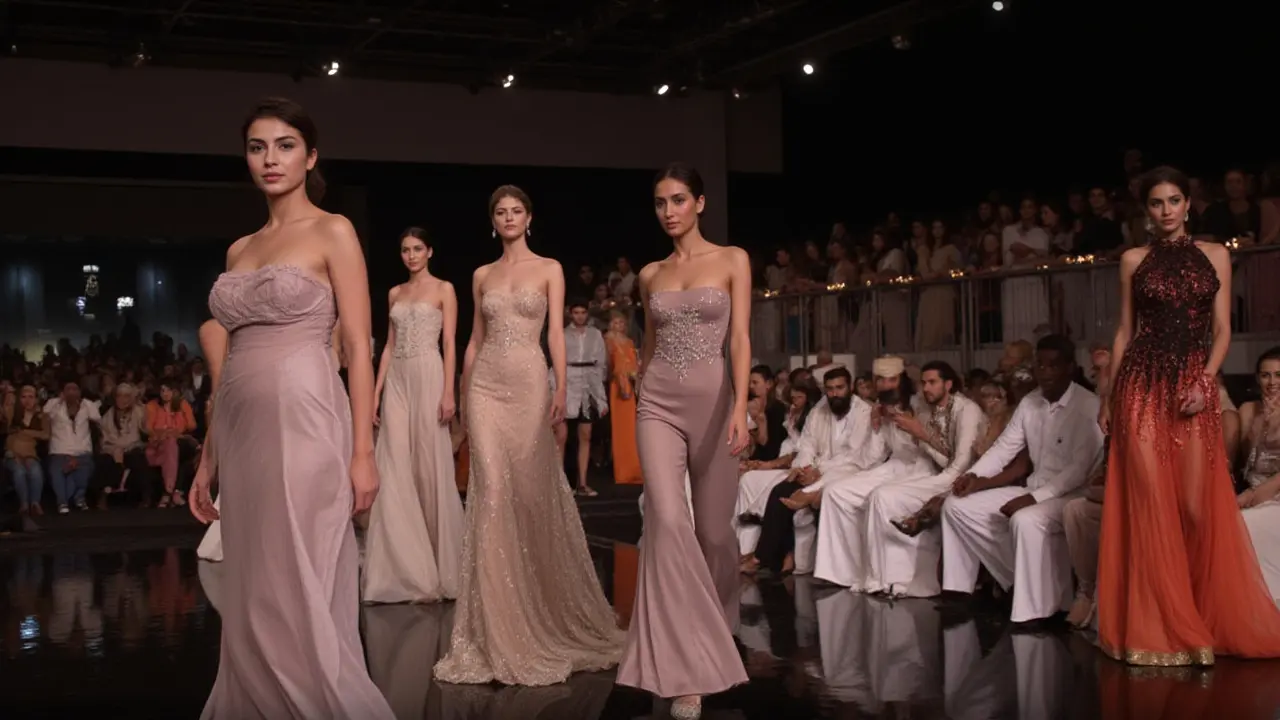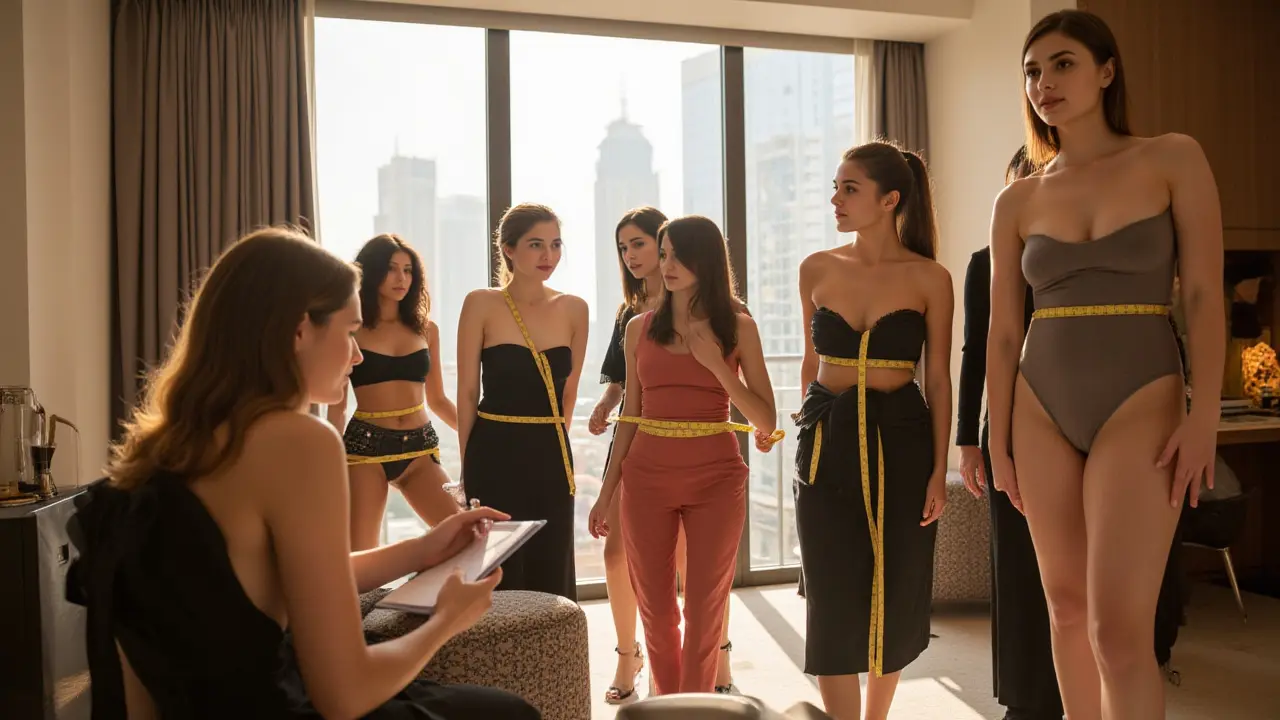Ever glanced at a runway and wondered if those waists are even real? The truth about skinny model waist size is more complicated than Instagram filters make it look. It isn't just about genetics — the fashion world sets some very tight expectations, and, honestly, it influences how millions view their own bodies. So what's the actual number? If you're comparing yourself to what you see in magazines or online, the gap between photos and reality is often bigger than you'd expect. And yes, the numbers are more than just vanity: agencies often treat them like passports for a modeling career. Let’s look past the myths and see how skinny a model’s waist really is, how the standard got to where it is today, and why all of this matters, whether you want to model or just want to understand what’s behind those jaw-dropping dresses.
Direct Answer: What Size Waist is a Skinny Model?
If you want the quick answer, here it is: In the high fashion world, a typical skinny model is expected to have a waist size between 22 and 25 inches (about 56 to 64 centimeters). Most major modeling agencies — think Elite, IMG, or Ford — list these numbers as ideal requirements for female models on their books. If you’re measuring right at the narrowest point (usually an inch above your belly button), you hit the sweet spot for booking the best runway jobs and editorial gigs. But that’s just one part of the model requirements — height (usually 5'9"/175 cm or up) and overall proportions are also serious factors.
The ‘model standard’ isn’t set at random, even if it seems ruthless. Designers tailor — literally — their sample clothes to fit these measurements, so models with a 22 to 25 inch waist are the ones who actually fit the garments perfectly straight from the designer’s rack. Many agencies around the world stick closely to this guideline. In fact, a 2023 report from the British Fashion Council found that over 80% of runway models in major European shows fell within that waist range, with the average at about 24.5 inches. Of course, there are exceptions, but if a model's waist is much above 26 inches, her chances of walking the top runways drop sharply.
Key Points: Skinny Model Waist Size Fast Facts
- High fashion models usually have a waist size between 22 and 25 inches (56–64 cm).
- Waist measurements are taken at the narrowest point above the navel.
- Most agencies list these numbers as the standard for runway and editorial bookings.
- Modeling agencies prefer proportional measurements: a 34-24-34 (inches) shape is iconic but rare.
- Commercial models can have slightly bigger waists — think 26 to 28 inches.
- Male models usually have a waist of 29 to 32 inches, tailored to their build.
- Body positivity movements are slowly pushing agencies to accept broader sizing, but high fashion standards remain strict in 2025.
- Sample sizes in fashion dictate these waist requirements, not just preference or taste.
- Lingerie, swimsuit, and fitness modeling use different measurements, sometimes valuing athletic shape over tiny waists.

Comprehensive Guide to Skinny Model Waist Sizes
If you’re picturing racks of sample clothes in a designer’s studio, maybe you’re closer to the reason these tiny numbers exist than you think. Every year, top designers team up with agencies before major fashion weeks — and they literally work backward from dresses and suits to the girls who will wear them. Designer sample sizes typically hover around a US 0 to 2 (EU 32 to 34), which means models need that coveted skinny model waist size of 22 to 25 inches just to get zipped up. If you fall outside that bracket, there’s a high chance you’ll miss out on the coveted shows in Paris, Milan, or New York.
But let’s be real: a 22-inch waist isn’t normal, even if every billboard seems to suggest otherwise. The average adult woman in the US has a waist of about 38 inches, according to CDC stats from 2022. Most young adults, even with healthy, active lifestyles, rarely dip below 26 or 27 inches unless they’re genetically built that way, have a strict diet, or both. A lot of top models stick to plant-based eating, avoid processed carbs, and work out daily with a mix of Pilates, yoga, and cardio. Some even work directly with nutritionists and trainers hired by their agencies. It’s a 24/7 gig — not any easier now than 20 years ago, despite the rise of more inclusive campaigns.
There’s also the question of proportion. A model with a 24-inch waist and 34-inch hips — that classic ‘hourglass’ — is rare, but highly sought after in both fashion and commercial modeling. Agencies don’t just want a number on the tape measure, but a balanced look. Height plays a huge role. For high fashion work, most models stand at least 5'9" (175 cm) tall, so a 24-inch waist will look way smaller in ratio to their long limbs than on someone shorter. This particular blend of tall and slim is so specialized that only about 1 in 5,000 women globally fit the traditional high fashion model body type.
So what’s happening now? Are things changing? The body positivity movement and new rules in some countries are slowly shifting agency requirements. In France, for example, models must provide a doctor’s note certifying their health, and digitally altered images need to be labeled as ‘retouched.’ Spain has banned models with a BMI below 18.5 from runway work. Still, the runway is slow to change — for major events, most working models still fall within that classic 22 to 25 inch waist zone in 2025. More brands are pushing for diversity, but the top shows stick to what they’ve always done, arguing it’s about clothing fit rather than body shaming.
Think you can trick your way to a 22-inch waist? Waist trainers and corsets are having a small comeback, but they mostly work as temporary fixes and can actually be risky for your organs and posture. If you’re aiming for model proportions, agencies strongly favor a healthy look over crash dieting, not just because it’s safer, but because sick or exhausted models can’t show up for bookings. And anyway, the biggest names in the industry — from Gigi Hadid to Paloma Elsesser — are proving you don’t need to starve to book a campaign, as long as you bring the look, the energy, and the confidence.
Definition and Context: What Does ‘Skinny Model Waist Size’ Mean in Modeling?
The term ‘skinny model waist size’ gets thrown around a lot, but it has a very specific definition in the professional modeling world. Agencies and casting directors nearly always measure the waist at the smallest point, which is usually just above the belly button and below the bottom ribs. Unlike regular clothing retailers that use more general sizing, in modeling, each centimeter counts and can make or break a career, especially during casting calls for major runway shows or industry photoshoots.
Are all models expected to fit into the same box? Not quite. There are different categories within fashion: RUNWAY or HIGH FASHION, where the strictest standards apply; COMMERCIAL, which includes catalog and advertising models; and SPECIALTY, like plus-size, petite, or alternative modeling. High fashion agencies, especially in Europe and the US, still push for the 22 to 25 inch waist as the norm. Commercial and catalog jobs allow for a bit more leniency, with acceptable waists up to 28 inches or beyond — especially as brands work towards greater inclusivity. Here’s a quick table for reference:
| Model Category | Typical Waist Size (inches) | Height Requirement | Other Standards |
|---|---|---|---|
| High Fashion/Runway | 22-25 | 5'9" and above | 34-24-34 ideal proportions |
| Commercial | 25-28 | 5'7" and above | More variety in body types |
| Lingerie/Swimsuit | 24-27 | 5'7" and above | Defined curves and toned body |
| Plus Size | 32 and above | 5'7" and above | Proportionality and confidence |
Why do these numbers matter so much? Designers create their first versions — or ‘samples’ — of new clothes in a standard tiny size. That size becomes the default during casting. A designer might only have one garment in each style, so only girls who fit into them perfectly can book the show. Even one extra inch on the waistline could mean the dress won’t zip or the pants won’t fit, pushing a model out of the lineup. So, it’s not just about aesthetics — it genuinely comes down to logistics and business efficiency in the fashion industry.
But times are gradually changing. There are now entire agencies and divisions specifically for curve, petite, and alternative models. Brands like Savage X Fenty and Aerie have made headlines for refusing to retouch photos and using models with bodies closer to the average. Yet, if you peek behind the scenes at a major show like Chanel or Dior, most models are still measured literally by tape before stepping onto the runway, and the traditional numbers are enforced.
If you're considering a modeling career, understanding these standards means you can focus on what fits your unique shape, instead of forcing yourself into a box. Don’t be afraid to reach out to agencies that celebrate your build. Good agencies will always prioritize overall health — and confidence in front of the camera trumps a perfect measurement every time.

Benefits of Understanding Skinny Model Waist Sizes
So, why should you care about all this? Even if you’re not planning to walk a runway or pose for Vogue, knowing what’s actually behind model waist sizes can clear up a lot of confusion about beauty and body image. For starters, realizing that a 22-inch waist is a rare outlier, not the norm, might take some pressure off next time you scan your Instagram explore feed.
For aspiring models, having accurate info is basically your GPS for breaking into the business. Imagine spending months working to meet a requirement, only to realize you were chasing the wrong target for your body type. Knowing the real numbers — and what agencies and designers are actually after — helps you decide where to focus your efforts, whether that’s runway, commercial, or fitness modeling. Plus, it means you can find an agent or agency that’s the right fit for you, instead of wasting time on the wrong castings.
If you’re just a fashion lover or someone who struggles with self-confidence, pulling back the curtain on these standards helps put things in perspective. That jaw-dropping ‘snatched’ waist you see on the runway? It’s so rare, even among models, that designers treat fitting the sample garments as a unicorn event. That doesn’t mean the rest of us are ‘wrong’ — it just means we aren’t living in a world built for sample sizes. Give yourself grace; most models don’t look like their portfolio shots first thing in the morning either!
Want to measure yourself like they do in agencies? Stand straight, exhale, and wrap the tape at the narrowest point — directly above your belly button and below your ribcage. Take a firm but not tight measure. If you’re between 22 and 25 inches and at least 5'9", you’re already right in the high fashion sweet spot. But don’t stress if you miss that bracket — commercial work and specialty modeling could still be open doors for you.
And for creative professionals — stylists, designers, photographers — understanding these standards saves time and money. You want the outfits and the models to come together without endless last-minute alterations. Knowledge really is power here, whether you’re setting industry trends or just picking out your own next outfit. So next time ‘waist size’ pops up on a model’s comp card, you’ll actually know why it matters and what’s behind those numbers.
